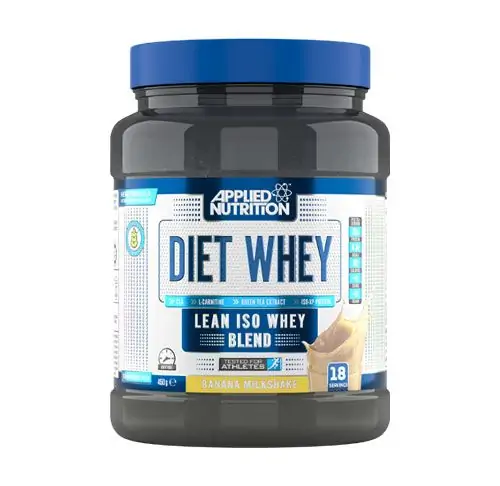Proteïnes d'alliberament lent: beneficis i quan prendre-les per obtenir els millors resultats

At The Nutrition Store, with over 10 years of experience in the supplement market in Barcelona, we have advised thousands of customers on the importance of slow-release proteins. These proteins are essential for those looking to maximize muscle recovery, prevent catabolism, and effectively control appetite.
In this article, you will discover what slow-release proteins are, their benefits, and the best times to take them.
What Are Slow-Release Proteins?
Slow-release proteins, also known as gradual absorption proteins, are those that the body digests and absorbs slowly, ensuring a steady supply of amino acids over time.
The main representative of this group is casein, which makes up approximately 80% of the proteins in milk. Its structure forms micelles that coagulate in the stomach, slowing digestion and providing a sustained release of amino acids.
Benefits of Slow-Release Proteins
– Prevention of muscle catabolism: During long periods without food, such as sleep, the body may break down muscle to obtain energy. Taking casein before bed helps preserve muscle mass.
– Improved muscle recovery: The sustained release of amino acids supports muscle tissue repair, especially during rest periods.
– Greater satiety and appetite control: Due to its slow digestion, casein prolongs the feeling of fullness, making it ideal for those controlling calorie intake.
– High calcium content: In addition to its protein contribution, casein is rich in calcium, benefiting bone health.
When to Take Slow-Release Proteins?
- Before bed: Taking casein before sleeping ensures a continuous supply of amino acids during overnight fasting, optimizing muscle recovery.
- Between meals: To maintain stable amino acid levels and prolong satiety, it is ideal to consume it between main meals.
- During fasting periods: If you go several hours without eating, casein prevents catabolism and keeps protein synthesis active.
Types of Slow-Release Proteins
There are several options available on the market, but the most common are:
- Micellar Casein: Extracted through chemical-free filtration, it maintains its micellar structure, ensuring a prolonged release of amino acids.
- Calcium Caseinate: Obtained by adding calcium to casein, it is more soluble in water and digests slightly faster than micellar casein, but still offers sustained protein release.
Casein vs. Whey Protein: Which One to Choose?
The main difference between these proteins lies in absorption speed:
- Proteïna de sèrum: Digests quickly, raising amino acid levels in a short time. It is ideal for post-workout consumption.
- Casein: Digests slowly, gradually releasing amino acids. It is perfect for prolonged periods without food, such as before bed.
Consell: Both proteins complement each other, so you can use them according to the time of day and your fitness goals.



Batut de plàtan Diet Whey 450
100% Whey Gold 2 Lb de maduixa
Platinum Hydro Whey 1,67 Kg Fresa
Conclusion: Do You Need Slow-Release Proteins?
Slow-digesting proteins, such as casein, are key to optimizing muscle recovery, preventing catabolism, and prolonging satiety. If you’re looking for a supplement to take before bed or between meals, this is an excellent option.
Discover the best slow-release protein options at The Nutrition Store and choose the ideal one for you. Contact us for personalized advice!






